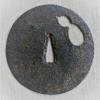-
Posts
5,949 -
Joined
-
Last visited
-
Days Won
19

ROKUJURO replied to Kyle68's topic in General Nihonto Related Discussion

ROKUJURO replied to ithuriel's topic in Wanted to Buy

ROKUJURO replied to BurtMayer's topic in Military Swords of Japan

ROKUJURO replied to BurtMayer's topic in Military Swords of Japan

ROKUJURO replied to BurtMayer's topic in Military Swords of Japan

ROKUJURO replied to Bazza's topic in General Nihonto Related Discussion

ROKUJURO replied to Kantaro's topic in Translation Assistance

ROKUJURO replied to Kantaro's topic in Translation Assistance

ROKUJURO replied to Kantaro's topic in Translation Assistance

ROKUJURO replied to Kantaro's topic in Translation Assistance

